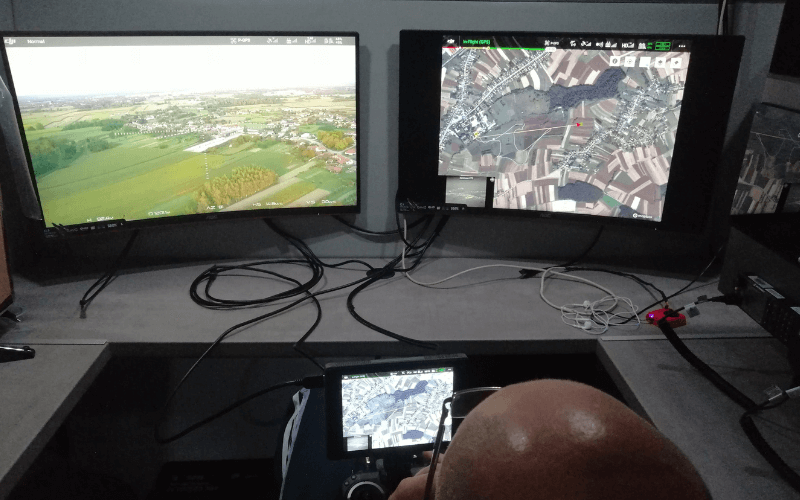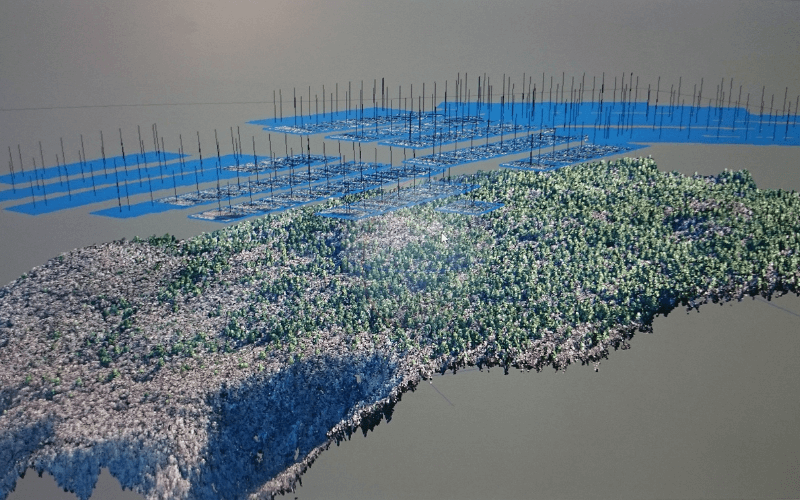Given the wide range of different imaging technologies and corresponding sensors, sometimes choosing how to collect data is more challenging than the data collection itself.
Hyperion Drones proudly presents a comprehensive training program focused on familiarizing with various types of sensors for specialized data collection.

Course modules
- Overview of Available Sensors:
Get to know the different data collection technologies using sensors on drones and their capabilities.
- Data Collection with Various Types of Sensors:
Learn how to prepare and how to collect data depending on the chosen sensor.
Aerial photogrammetry is a passive data collection method where it is necessary to collect data from several adjacent recording sites in a series about one point.
In contrast, laser surveying is an active data collection where it is enough to collect data from only one recording site for one pooint, which leads to faster obtaining of the required sets of data.
We will go through the technology of laser imaging that enables precise determination of the current orientation and position for each measured spatial point. We obtain that by integrating the device’s GPS RTK positioning and IMU ( Inertial Measuring Unit ). That way we better monitor the kinematics of the movement of the laser scanner pole in space.
We will also explain all the different industries and needs where this data collection is used today.
Module themes:
- Introduction to LIDAR technology.
- Calibration of LIDAR sensors and data collection techniques.
- Processing and analysis of collected LIDAR data for various applications.
Reading thermal images requires certain knowledge, especially knowledge in the field of thermodynamics because there are many pitfalls for the quality reading of a thermal image or thermogram. It is a common misconception that a thermal camera records temperature. The thermal camera detects the energy emitted in the IR part of the spectrum. However, what it shows as a detected value is the temperature.
That is why the person who analyzes the thermal images must have special knowledge and it’s not enough to just record and read the values from the thermal image. People who know how to read thermal images have most often completed training for thermalists and know how to interpret the “temperature” shown on the image.
During the education, we will go through standard formulas that explain how the detected total IR energy of an object is converted into temperature.
We will explain different forms of energy – the body’s internal energy, reflected and transmitted, and how it is read in the total energy of the observed object. For example, certain materials reflect energy very well (metals), so the detected energy in such materials can differ greatly from its actual heat (internal energy of the body).
We will also go through examples of how thermal imaging can be used in practice.
Module themes:
- Basics of thermodynamics.
- Basics of data collection with thermal cameras.
- Calibration of thermal cameras for optimal data collection.
- Real Applications: Gas and liquid leak detection, infrastructure inspection, wildlife monitoring, search and rescue, and more.
- Basics of multispectral imaging.
- Calibration and data collection for agriculture, forestry, ecology, and other domains.
- Analysis of multispectral data.
- Basics of RGB cameras.
- Differences between RGB sensors.
- Data collection using RGB sensors.
- Processing of collected data with RGB sensors.
- Integration with GIS tools.
- Introduction to specialized sensors and payloads.
- Usage of customized payloads.
- Development of specialized solutions for the use of special payloads and sensors.
- Customized training for company-specific payload applications.

Join forces with Hyperion Drones and dive into the world of data collection using specialized sensors.
Equip yourself and your organization with the knowledge and skills to leverage the full potential of drone technology.
contact us